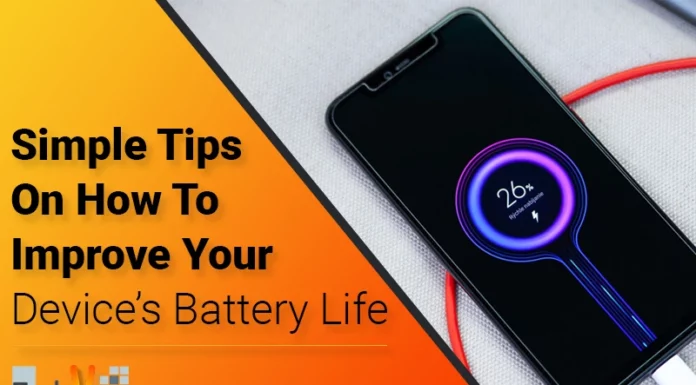Monitors from the Past and of the Future
Basically, the monitor plays a very important role in a computer. The monitor is the most visible face to tell the client whether the process is perfect or not. It accumulates signals from a hard drive and makes these appear in texts and graphics format. The size and eminence of screen is important for users, because they closely narrate to the nature of effort done in the computer.
Cathode ray tube otherwise known as CRT is a vacant cylinder, consisting of one or more electron guns, which may be internal electrostatic deflection plates or made of phosphors. Monitors of televisions and computers have three electron beams which are scanned repeatedly and systematically in fixed sample called a Frame. Bars are bent by magnetic deflection coils to vary generated magnetic field and driven via electronic circuits around the tubes’ neck.
Did you know that the CRT’s first version was invented by a German physicist named Ferdinand Braun in 1897 and was known as the Braun tube? It was known as cold-cathode diode, an alteration of the Crookes tube with a match.
Color tubes employ three special phosphors that emanate red, green and blue. They are packaged within strips or groups called “triads”. CRT colors have three electron guns, one in prime color, arranged in direct or triangular configuration. A shadow masks tube comes within a metal plate through undersized holes. They are arranged so that the electron beam only illuminates the suitable phosphors on the face of the tube.
Everyone may love a flat screen processor monitor compared to CRT monitors. These screen types have higher resolution in addition to its sharper image. Flat screen computers are not only great, but it comes with gorgeous colors and graphics and again its video’s efficiency is of superior scope than that of CRT.

Liquid crystal displays or LCD is slim, flat electronic screen, which uses a property of light in modulating liquid crystals.
This screen is ideally used in a mixture of functions for computer monitors, television, instrument panels, cockpit displays, aircraft, signage, etc. They are common in shopper electronic devices similar to video recorders, gaming devices, watches, calculators and also telephones. LCDs have replaced cathode ray tubes in most applications. Generally, they are more firm, lightweight (also versatile), cheaper, reliable and easier on the eyes.
LCDs are efficient and offer safer disposal than cathode ray tube. The low power consumption allows a battery to be used in electronic devices. An electronic appliance consisting of an amended visual random number of pixels filled by liquid crystals and dressed in front of a light source or else a reflector to generate descriptions in color or black with white. The first discovery leads to the development of LCD machinery; the innovation of liquid crystals, since 1888.
Plasma display panel (PDP), flat screen type of television displays is commonly large. They are called “plasma” because it shows pixels are based on plasma cells or in rooms which have more energy commonly known as Fluorescent Lamps. A panel usually has millions of small cells in a closed space between two glass panels. These spaces or “cells” hold a mixture of noble gases and a small amount of mercury. Like fluorescent lamps at a desk, when mercury is vaporized, a voltage is applied across the cell; the gas shapes a plasma cell.
Plasma is a compilation of particles, which react strongly and communally to electromagnetic fields or electrical charge, in the form of clouds of gas-like, or ion beams. When electricity flow some electrons, it strikes mercury particle electrons and the moving plasma temporarily increases the energy level of the molecule until the overload energy is removed. Mercury produces the energy ultraviolet photons.
This Digital Light Processing or (DLP) is a Texas Instruments-registered trademark that is used in various televisions and video projectors. This was developed originally in 1987 by Dr. Larry Hornbeck of Texas Instruments.
DLP and LCD are presently display technologies following rear-projection television, having supplanted CRT projectors back. These rear-projection technologies struggle against plasma plane screen and LCD in the market for HDTV. DLP is solitary of the technologies worn in digital cinema projection.
An organic light-emitting diode (OLED) is a thin light-emitting diode (LED) with emission layer. OLED technology is primarily intended for the practical elements of the image display devices. These devices are assured to be much cheaper to manufacture than conventional LCD screens. When emissions from electroluminescent layer is polymeric, variable number of OLEDs can be placed in rows and columns on the screen using simple “printing” methods to create a colored graphics display, for use as computer screen, portable screens and tables, and advertising information.
Surface-conduction electron emitter display (SED) is a flat, high resolution screen. Some SED has a diameter of more than one meter. The SED consists of a network of electron emitters and a phosphor layer, separated by a space that is evacuated of all air. Every electron emitter represents a single pixel. SED requires no electron beam focus and operates at a lower voltage than a CRT. Brightness and contrast compare favorably with high-end CRT monitors. Electron emitters’ prototypes were developed with a diameter of several nanometers. SED technology offers an extraordinary image resolution.
A touch screen is an electronic device that can visually detect the presence and location of a contact in the display area. The term generally refers to touching the screen on the device with a finger or hand whenever you use it.
The touch screen has two attributes. First, it lets you interact directly with what is displayed, with a cursor controlled by a mouse or touchpad. Second, it gives no intermediate devices. These displays can be connected to computer networks or terminals. They also have an important role in the design of digital devices such as Personal Digital Assistant, satellite navigation devices, mobile phones, and video games.
Thin-film transistor (TFT) is a special field-effect transistor made by depositing thin films of semiconductor active layer and the dielectric layer and metal contacts with the support platform. A common substrate is glass, since the first application is TFT LCD. This differs from traditional transistors, which are typically semiconductor substrate, such as a silicon wafer.
A light emitting diode (LED) is a source of light semi-conductors. LED indicators are used in many devices, and are increasingly used for lighting. Presented as a convenient electronic component in 1962, the LED light emitted at the beginning of low intensity red, but modern versions are available in visible wavelengths; ultraviolet and infrared, with a very high brightness. When a diode is forward-based, electrons are capable of combining with holes in the device, releasing energy known as photons. LED is often a small area and integrated optical components can be used to shape its radiation pattern.
LEDs have many advantages over incandescent light sources. It has lower energy consumption, longer life, smaller and increased switching speed and reliability. Its lights are powerful enough and require more heat and current management of fluorescent lamps as the sources of the corresponding output.
LEDs are used for lighting applications in the different priorities of aviation, automotive lighting including brake lights, emergency lights and indicators, as well as traffic signals. Infrared LED is also used for remote control units of many commercial products such as televisions and other appliances.
A 3D display is a screen capable of transmitting images in three dimensions to the viewer. Practical high resolution displays, have recently became available at much lower prices. Consequently, the marketing of 3D displays for entertainment gets more funding.
Types of 3D displays
- Stereoscopic
Stereoscopic technology uses a separate device for each person viewing the scene that gives a different picture to the left and right eyes of the person.
- Computer generated holography
The hologram is a known work of art of the late 20th century; also, research on holographic screens have equipment that is proficient in creating fields of light matching to that which would be removed commencing the original scene, with two parallax horizontal and vertical across an extensive range of viewing angles. Some companies only produce trade holographic imaging equipment.


















